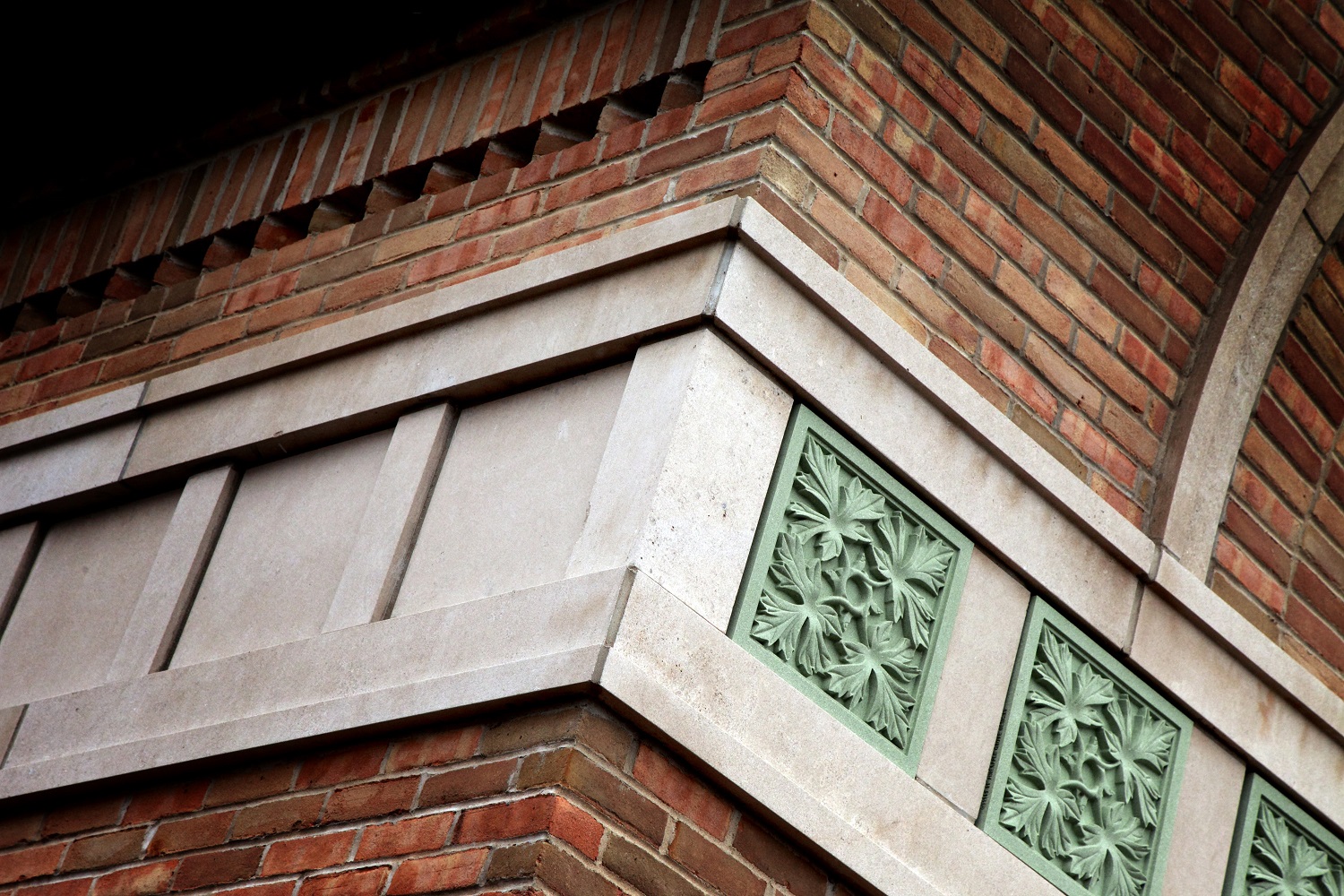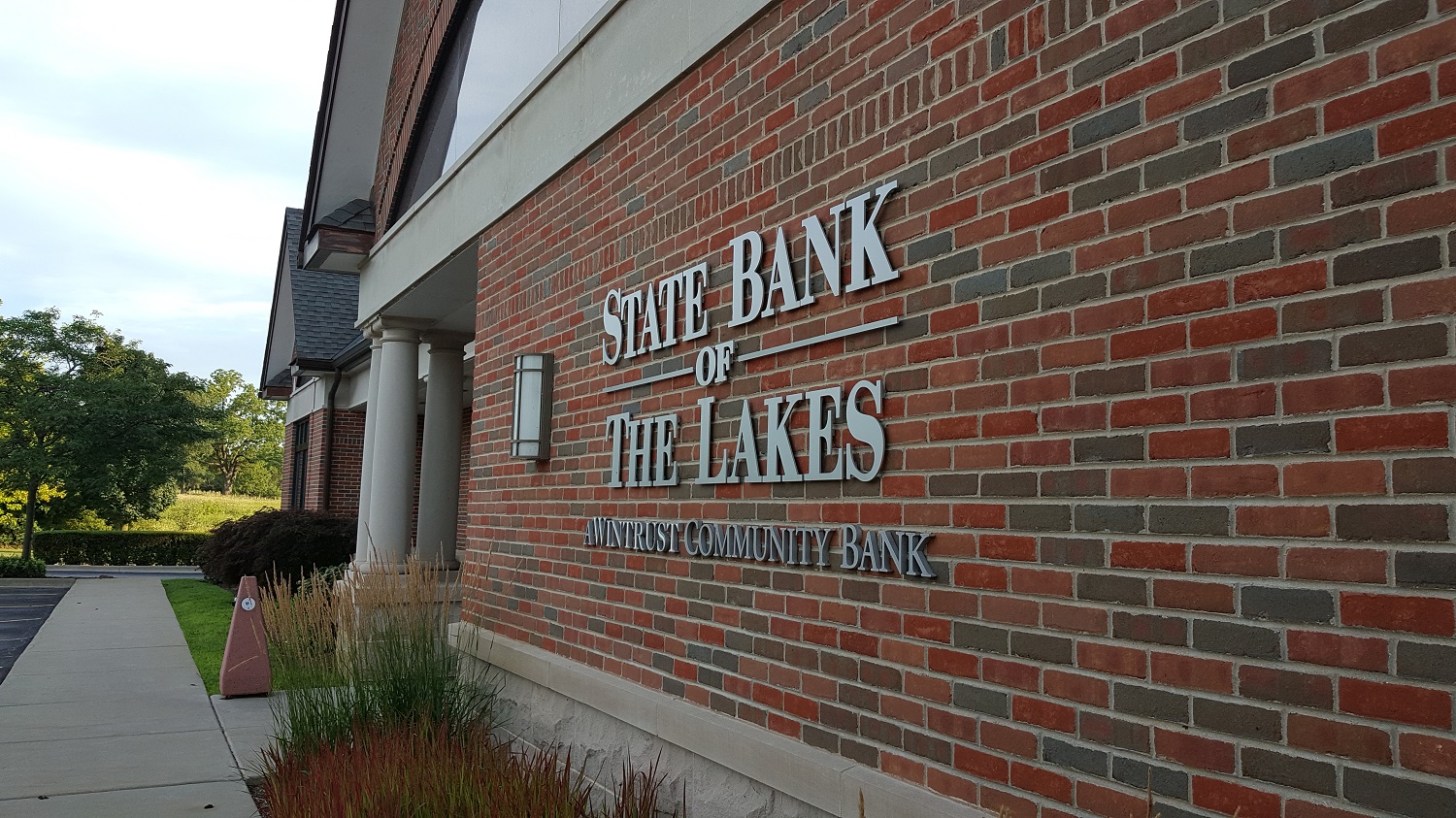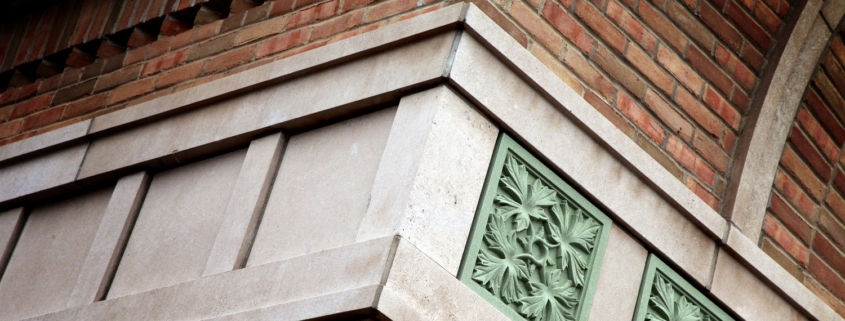Red Brick: A Favorite Building Material

State Bank of The Lake in Round Lake, designed by Bleck & Bleck Architects, LLC.
Red brick evokes images of early American architecture. If you’re a lover of colonial-style buildings, it’s bound to be a favorite building material. Although we mostly think of it in traditional-style buildings, there are many other styles that lend themselves to this beautiful material. In fact, it’s one of our favorite building materials and we’ve used it in many projects such as State Bank of the Lakes and the Gurnee Village Hall. Let’s explore brick, why it’s so popular, and how it’s made.
Brick as a Building Material
Because of its many great qualities, brick has been used in structures and roads for thousands of years.
Brick is an excellent and commonly used man-made building material made from clay and/or shale. It comes in a variety of shapes, colors, finishes, and sizes. Although brick units vary in size, 2 1/2” x 3 3/4” x 8” is the most common size used in the US. Bricks are typically joined together with mortar into walls, foundations, columns, or floors. They are strong, durable, and fire-resistant. In addition, brick allows for flexibility in design and layout. Because of its solid nature and strong composition, brick resists wear and forms a good barrier to moisture, noise, fire, and extreme temperatures.
Famous Fires and the Rise of Non-Flammable Materials
How did brick become a material of choice in the US?
Famous fires played a big part in the popularity of brick and other non-flammable materials. A mattress fire on a steamboat moored at the St. Louis city’s dock was the cause of the St. Louis Fire of 1849. Much of the downtown’s frame structures were destroyed. Back in 1871, the Great Chicago Fire destroyed over 3 square miles of the city’s frame buildings and left over 100,000 people homeless.
In addition to famous big city fires, many small towns such as Libertyville (1895) experienced dramatic fires that spread quickly and caused devastation. Most famously, and on the same day as the Great Chicago Fire, a very large forest fire burned the towns and area around Peshtigo and Brussels, Wisconsin, and took 1,500+ lives.
These dramatic fires influenced cities to change building codes in favor of non-flammable materials, such as brick and stone.

Gurnee Village Hall, designed by Bleck & Bleck Architects, LLC.
Brick Becomes a Preferred Building Material
As a non-flammable product, brick became a popular choice for new commercial and residential construction.
In addition to its fire resistance, brick had many other advantages. Some examples: the materials to make brick (clay and shale) were readily available, the small units allowed design flexibility and creativity, and it was easy to transport. As a result, brick was embraced as a preferred material. As the country grew, design and construction creativity boomed, resulting in the construction of many innovative brick structures. For example, the solid brick Monadnock block in Chicago became the world’s largest office building in 1893. Today, this distinguished structure is considered the tallest load-bearing brick building.
Brick’s Raw Materials and Manufacturing
How is brick made and what materials are needed in its manufacture?
The properties of each brick are determined by the raw materials and the manufacturing process used. Because clay is abundantly available, brick is a common building material in most areas of the US. However, not all clay is suitable for brick manufacturing. Clay that is used to make brick must possess plasticity for easy shaping when combined with water. It must also be able to retain its strength and shape once it’s formed. In addition, the particles of this natural mineral must fuse together once it is fired.
The Manufacturing Process:
- Mine and store the raw materials
- Process raw materials to control particle size
- Mix clay and water, form in molds or form an extruded column and cut it into bricks
- Add a coating if needed and dry the bricks for 24 to 48 hours
- Fire the bricks in a kiln for 10 to 40 hours at carefully controlled temperatures
- Cool, sort, grade, and package the bricks
Read more about the manufacture of brick from this older, but detailed article from The Brick Industry Association.

State Bank of The Lakes in Lake Villa, designed by Bleck & Bleck Architects, LLC.
The Advantages of Brick
There are so many advantages to using brick in your next building project. Let’s just start by saying the brick is an attractive material. In addition,
- Brick is made from natural, stable, and readily available elements.
- The manufacturing process of brick is energy-efficient.
- Brick materials are locally sourced and mined close to the kiln.
- Brick is easy to transport to construction sites.
- Brick comes in many sizes, shapes, colors, and finishes.
- Brick is strong and durable.
- Brick forms a barrier from wind, rain, fire, and extreme temperatures.
- Brick improves the energy efficiency of a building.
- Brick lasts a long time and requires minimal maintenance.
- Brick can be repurposed and recycled.
- Brick can reduce the cost to insure a building.
- Brick surfaces can be scored, patterned, and glazed.
- Brick can be arranged in many configurations, allowing limitless creative appearances.
Red Brick is a Popular Choice
Red brick is a popular choice and many cities are known for their handsome red brick buildings.
- In 1900, St. Louis was the largest brick producer in the world. Louis led advances in brick making and the hydraulic brick making process became the norm.
- Philadelphia is blessed with high-quality red brick clay just below the ground’s surface. Read about Philadelphia’s Old City
- Chicago’s red brick buildings famously include the Blackstone Hotel in which 3 million bricks were used, including 800,000 St. Louis regal red brick on the façade.
Did You Know? Brick that contains iron will be some shade of red.
How does brick take on a red appearance? The shade of red in brick comes about because iron oxide forms when the iron in the clay is exposed to an oxidizing fire. Darker brick colors usually result from higher temperatures. In addition, darker-colored brick is often associated with lower absorption and higher compressive strength values.

 © The Photographic Artwork of Jacob T. VanVooren
© The Photographic Artwork of Jacob T. VanVooren
